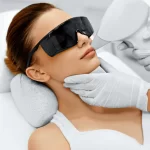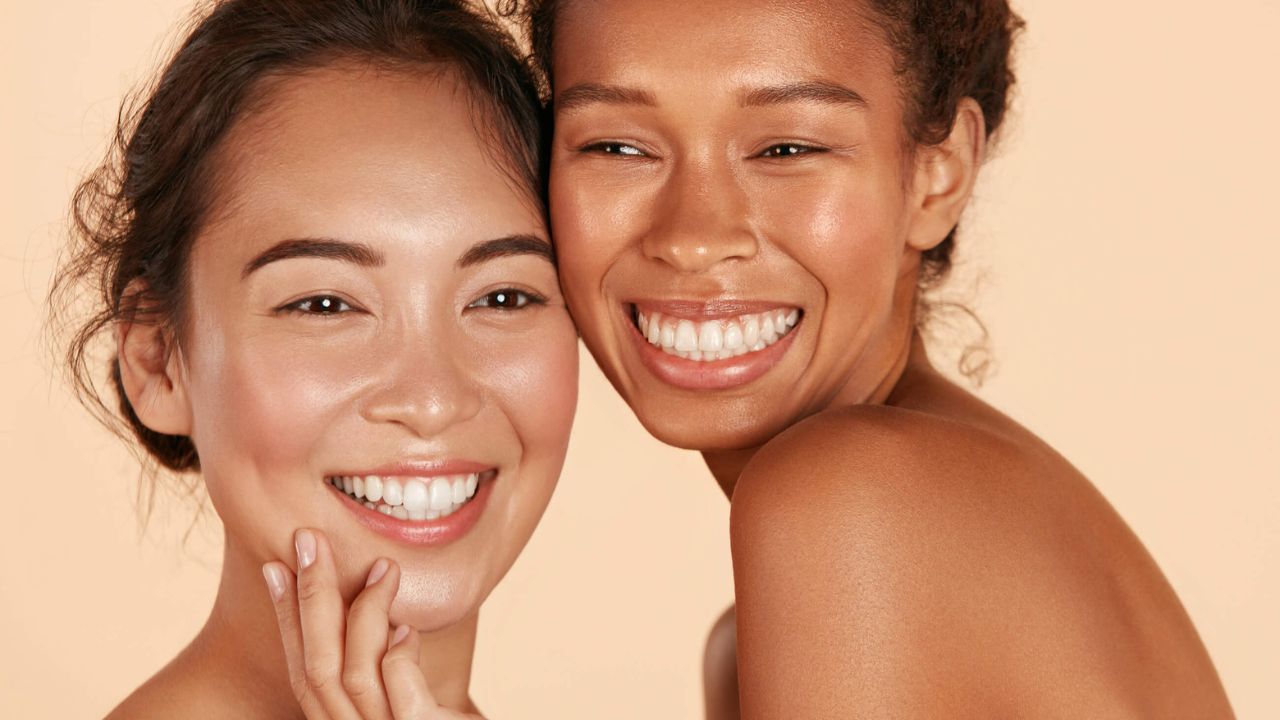Struggling to find that perfect foundation match or the lipstick shade that seems just made for you? Well, the secret lies in understanding your skin’s undertone. It’s like the backstage hero of your makeup routine, and I’m here to help you uncover this hidden gem!
The Essence of Skin Undertone: Your Makeup’s Best Friend
Ever wondered why the same lipstick shade looks dreamy on your friend but just doesn’t hit the mark on you? It’s all about the undertone! Your skin’s undertone is the subtle hue beneath the surface color (or overtone). While the overtone can range from ivory to tan to dark, the undertone is a constant, unique color underneath. This little-known aspect can be the game-changer in how colors play out on your skin, influencing everything from your foundation to your favorite dress.
Why Knowing Your Skin Undertone is a Game Changer
Imagine being able to walk into a store and confidently pick out colors that make you look radiant. That’s the power of knowing your undertone! It’s not just about the color that catches your eye; it’s about what truly complements you. That foundation that looked fabulous in the bottle but turned you into a ghost? That’s an undertone mismatch. Understanding your undertone means saying goodbye to these makeup mishaps.
Decoding the Types of Undertones: More Than Just Warm and Cool
Traditionally, we talk about three main types of undertones:
- Warm Undertone: Think sun-kissed! If your skin has hints of yellow, peach, or golden hues, you’re basking in the warm undertone zone.
- Cool Undertone: If your skin leans towards pink, red, or bluish hues, you’re cool-toned. It’s like the gentle glow of moonlight on your skin.
- Neutral Undertone: Can’t decide if you’re warm or cool? You might be neutral, enjoying the best of both worlds with a balanced mix.
But wait, there’s more! The often-overlooked olive undertone, with its unique yellow and greenish-gray hues, stands in a category of its own. And here’s a myth buster – your skin’s darkness or lightness doesn’t dictate your undertone. That means anyone, regardless of their overtone, can have any undertone.
So, how do you determine your magical undertone? Keep reading, as I guide you through simple yet effective ways to discover this key to unlocking your best makeup looks. Stay tuned, and get ready to embrace your true colors!
Discovering Your Skin’s True Colors: Unveiling Your Undertone
Embarking on a journey to uncover your skin’s undertone is like unlocking a new realm of beauty insights. It’s not rocket science, but a fun, eye-opening experience that can transform your approach to makeup and fashion. Let’s dive into the simple yet effective ways to reveal your skin’s true undertone!
1. The Vein Test: Your Roadmap to Undertone Discovery
Take a peek at your wrists. Your veins are more than just blood vessels; they’re your undertone compass! Here’s what they reveal:
- Warm Undertone: If your veins have a greenish tinge, it’s a warm undertone waving at you.
- Cool Undertone: Blue or purple veins? That’s the cool undertone’s signature.
- Neutral or Olive Undertones: Can’t pinpoint the vein color, or do they blend with your skin? You’re likely in the neutral or olive zone.
2. The Jewelry Test: Shimmer and Shine Your Way to the Answer
This test is as much fun as playing dress-up. Grab your jewelry box and let’s get testing:
- Warm or Olive Undertones: Gold jewelry lights up your look? Hello, warm or olive undertones!
- Cool Undertones: If silver, rose gold, or platinum make your skin pop, you’re team cool undertone.
- Neutral Undertone: Both gold and silver flatter you? Neutral undertone, that’s you!
Tip: No jewelry? No problem! Use gold/yellow and silver-colored foils for the same effect.
3. The Color Test: Wardrobe Wonders
Rummage through your closet for this one. The colors you wear can be a big clue:
- Cool Undertone: Look stunning in purples, blacks, emerald, bright blue, lavender, or pink? Cool undertone alert!
- Warm Undertone: If earthy tones like olive green, brown, coral, and amber suit you best, warm undertone it is.
- Neutral Undertone: Almost every color suits you? Lucky you with a neutral undertone!
- Olive Undertone: You rock greens, purples, pinks, but pastels are a no-go? Olive undertone for the win.
4. Sun Reaction Test: How Does Your Skin Say Hello to the Sun?
Your skin’s reaction to the sun is more than just a sunburn or tan:
- Cool Undertone: Sunburns easily turning pink or red? That’s a cool undertone.
- Warm Undertone: Tanning without burning, especially with a yellowish or olive tint? Warm undertone spotted.
5. Behind-the-Ears Secret
The skin behind your ears doesn’t lie. Yellowish? Warm undertone. Rosy or pinkish? Cool undertone.
Hannah Louise Poston, a YouTuber, shares her eureka moment in discovering her olive undertone, highlighting how it’s often a process of elimination and keen observation.
Remember, the overtone and undertone duo can be a bit of a puzzle, but understanding both is key to perfecting your makeup and wardrobe choices. Stay tuned as we next unravel the mystery between skin overtone and undertone. Get ready to embrace your true colors and let them guide you to your best makeup and style decisions!
Navigating the World of Overtone and Undertone: Your Path to Perfect Makeup
Diving into the world of makeup can sometimes feel like navigating a complex map. But understanding the difference between overtone and undertone can be your compass, guiding you to makeup that not only looks great but feels like it was made just for you. Let’s demystify these terms and explore how to choose the right foundation and colors for your unique skin tone.
Overtone vs. Undertone: The Dynamic Duo of Your Skin
Think of overtone as the first impression of your skin – the visible color you see in the mirror. It’s the one that changes with a tan or in different seasons. But there’s a subtle hue beneath this overtone, always constant, never changing – that’s your undertone. While the overtone might play seasonal dress-up, the undertone is your skin’s true color story, essential in choosing makeup that truly matches you.
Choosing the Right Foundation: Your Undertone’s Best Friend
The right foundation can feel like a second skin, and your undertone is key to finding it:
Cool Undertone: Go for foundations with a hint of yellow to balance any pink or red in your T-zone. Mix and match to find the perfect blend that harmonizes with your skin.
Warm Undertone: Embrace foundations with golden or yellow undertones. Whether you have peachy fair skin or a honey-like deep tone, these shades will complement your warmth beautifully.
Neutral Undertone: Look for foundations that subtly lean towards golden, steering clear of overly yellow, golden, pink, or red shades.
Olive Undertone: Opt for foundations that gently tip towards golden, avoiding ones that skew too yellow, golden, cool red, or pink.
Remember, the perfect foundation should seem to vanish into your skin under natural light. Test it on your cheekbones, jawline, and around your nose for the best match.
Colors That Celebrate Your Undertone
Your undertone doesn’t just influence your foundation choice; it’s a guiding star for your entire makeup palette.
Cool Undertones: Light cools should explore soft pinks, muted mauves, and vivid colors with bluish undertones. Dark cools can embrace bolder hues like fuchsia, deep plum, and poppy, all with a blue base. Eye shadows in deep purple and gray can be striking.
Warm Undertones: Light warms can indulge in sun-kissed pinks, sandy neutrals, rich wines, and berries. Dark warms look stunning in deep burgundy, tangerine pinks, and fiery reds. Eye shadows in vibrant corals, brown neutrals, golds, peachy pinks, and metallic bronzes are your go-to for a radiant look.
Neutral Undertone: You’re the lucky one with a pass to play across the spectrum! Dive into deep purples, golden shadows, and vibrant oranges and reds. Your makeup world is a canvas of creativity.
Olive Undertone: Accentuate your natural glow with rosy pinks, warm peaches, royal blues, deep plums, and sapphire. Lipsticks in wine reds, cranberries, and deep pinks add just the right touch of glam.
Whether you’re warm, cool, neutral, or olive, understanding your undertone opens up a world of makeup possibilities that align perfectly with your natural beauty. So, next time you’re contemplating that foundation or lipstick, remember: it’s all about the undertone. Happy experimenting!
Frequently Asked Questions
Can I Change My Skin Tone?
Absolutely, your skin tone can change. Techniques like tanning, using skin lightening products, or even certain cosmetic procedures can alter your skin tone. It’s important to remember, though, that while these methods can change your skin’s surface color, they don’t affect your underlying undertone.
Which Skin Tone Tans Easily?
If you’re looking to catch some sun-kissed glow, Fitzpatrick skin types 5 and 6 are the ones that tan most readily. These skin types generally have a moderate brown to dark brown or black skin color, and they tan quite profusely, giving them a deeper, more pronounced tan.
Is Burgundy a Cool or Warm Shade?
Burgundy, with its rich blend of purple and red, falls in the cool-toned category. It’s a shade that resonates with depth and intensity, often favored in cooler color palettes.
Does Skin Tone Change with Age?
As we age, it’s common to see changes in our skin tone. You might notice your skin getting lighter compared to your younger years. However, while the overtone can change, your undertone remains steadfast – a consistent hue that doesn’t shift over time. In fact, as you age, these undertones might become more prominent or noticeable.
Do Undertones Change with the Seasons?
Your skin’s undertone is like your fingerprint in the world of beauty – unique and unchanging. Unlike your overtone, which might dance with the seasons, turning lighter or darker with sun exposure or paler in winter, your undertone is a constant companion. It doesn’t change with the seasons, ensuring that the colors and shades that suit you will always remain your best choices.









